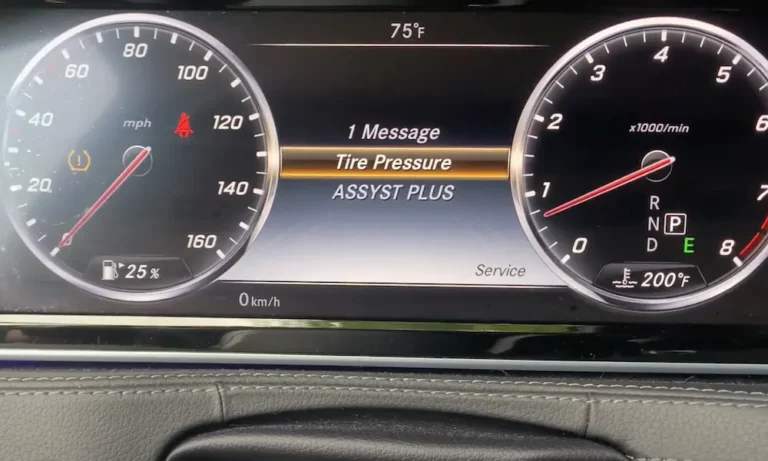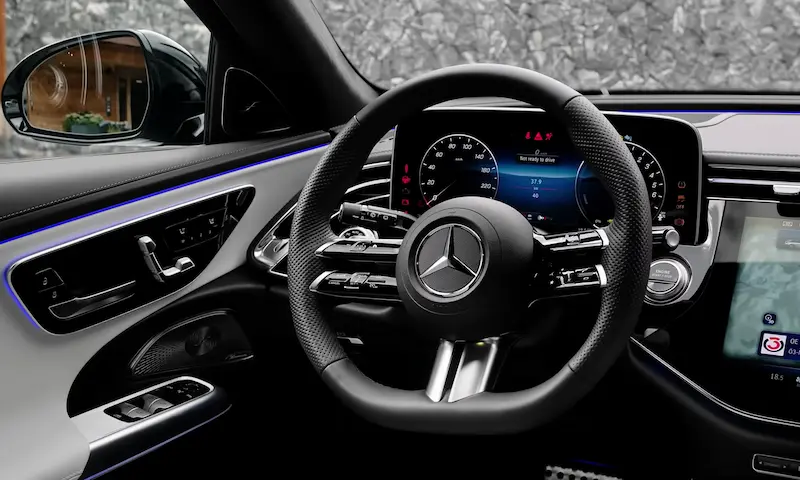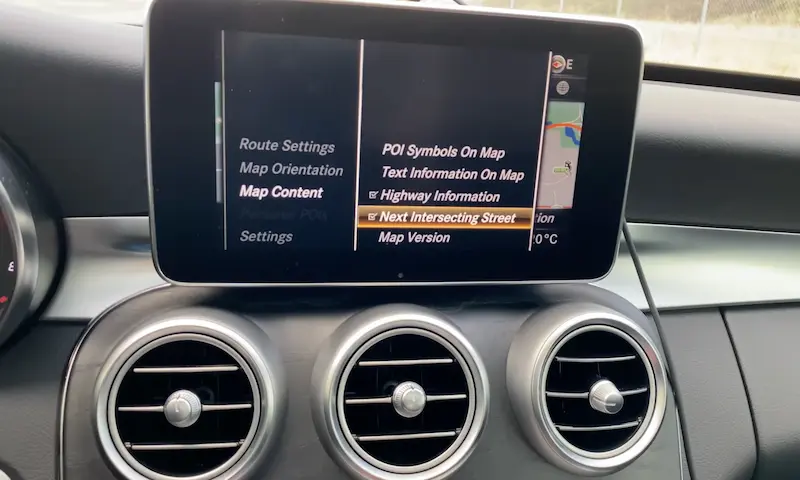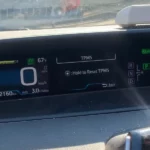Ever seen that annoying tire pressure warning light pop up on your Mercedes dashboard? You’re about to learn exactly how to make it disappear. Mercedes tire pressure reset procedures vary by model year and system type, but this guide covers everything you need to know to get it done quickly and correctly.
What Does the Mercedes Tire Pressure Warning Light Mean?
When that tire-shaped warning light illuminates on your dashboard, your Mercedes is telling you something important. This light indicates that at least one of your tires has pressure significantly below the recommended level.
If the light is flashing rather than steady, it’s an urgent warning that pressure has dropped to potentially dangerous levels. This could result from:
- Temperature changes (especially sudden cold weather)
- A puncture or slow leak
- General air loss over time
Ignoring this warning isn’t just annoying—it’s risky. Low tire pressure affects your handling, reduces fuel efficiency, causes uneven tire wear, and can lead to a dangerous blowout.
Why Proper Tire Pressure Matters in Your Mercedes
Mercedes-Benz vehicles feature a sophisticated Tire Pressure Monitoring System (TPMS) for good reason. Maintaining correct tire pressure:
- Improves fuel economy by up to 3%
- Extends tire life by preventing premature wear
- Enhances vehicle handling and stability
- Reduces the risk of tire failure and accidents
The recommended tire pressure for most Mercedes models falls between 32-35 psi, though your specific recommendation is listed on a sticker inside your driver’s door jamb.
Mercedes Tire Pressure Reset Methods by System Type
MBUX System Reset (2018 and Newer Models)
Modern Mercedes models equipped with the MBUX infotainment system use a digital menu-based reset process:
- Turn the ignition to ON position without starting the engine
- Press the Home button on the left side of your steering wheel
- Use the touch-sensitive button on the steering wheel to scroll right until you find “Service”
- Select “Tires” from the menu
- Confirm the reset by pressing OK or clicking the touch button
- The system will display “Tire pressure monitor restarted”
The system may need about 20 minutes to fully reset, so keep an eye on the display to ensure everything’s working properly.
COMAND System Reset (2012-2017 Models)
For slightly older Mercedes models with COMAND technology:
- Park and turn the ignition to ON without starting the engine
- Press the Home button on the left side of the steering wheel
- Use the down arrow to navigate to “Service” in the instrument cluster
- Press OK to select it
- Find “Tire Pressure” and press OK again to reset
- You should see confirmation that the system has been reset
After reset, monitor the tire pressure screen over the next few days to confirm the system is working correctly.
Step-by-Step Mercedes Tire Pressure Reset Guide
Before You Start: Critical Preparation
Before attempting any reset procedure:
- Check all tire pressures with a quality gauge when tires are cold
- Inflate all tires to the recommended pressure (found on the driver’s door jamb sticker)
- Make sure all tires are properly inflated before resetting the system
This preparation ensures your TPMS will be calibrated to the correct baseline pressures.
Starting the Reset Process
- Turn on your Mercedes (power on, engine off)
- Locate the Menu button on either your steering wheel or dashboard
- Press this button to access the vehicle’s main menu system
Finding the TPMS Reset Option
- Use the steering wheel controls to navigate through the digital display
- Look for options labeled “Service,” “Vehicle Settings,” or “Tire Pressure”
- For MBUX systems: Swipe to the right side of the menu → Select “Service” → Scroll to “Tires”
- For older models: Navigate to “Service” → “Tire Pressure”
Completing the Reset
- Select the reset option when you reach the tire pressure menu
- Confirm your choice by pressing OK or the appropriate confirmation button
- On some models, you’ll need to press and hold the reset button until the tire pressure light blinks three times
- When the light stops blinking and remains steady, the reset has been initiated
After Reset: Required Calibration Drive
After confirming the reset, take your Mercedes for a short drive to allow the system to calibrate:
- Drive at speeds above 20 mph for at least 10 minutes
- Some models may require speeds around 50 mph
- During this drive, the system learns and establishes new baseline pressure readings
- The warning light should turn off once calibration is complete
Model-Specific Reset Instructions
S-Class TPMS Reset (2016-Present)
The flagship S-Class features a digital interface reset:
- Press the home button on your steering wheel
- Navigate to the “Service” section
- Select “Tire Pressure Monitoring”
- Choose “Use Current Pressures as New Reference Values”
- Confirm by pressing OK
- Drive for approximately 10 minutes at highway speeds for the system to calibrate
C-Class TPMS Reset (2015-Present)
For C-Class models:
- Turn the ignition on without starting the engine
- Press the steering wheel menu button
- Use the arrows to navigate to “Service/Settings”
- Select “Tire Pressure”
- Choose “Restart” or “Use Current Pressures”
- Confirm by pressing OK
- Drive above 20 mph for at least 10 minutes to complete calibration
E-Class TPMS Reset (2017-Present)
E-Class models have a similar procedure:
- Turn on the ignition without starting the engine
- Press the Home button on the steering wheel
- Navigate to “Service” and select it
- Scroll to “Tire Pressure” and select it
- Choose “Use Current Pressures”
- Press OK to confirm
- The display will show “Tire Pressure Monitor Restarted”
ML350/GLE TPMS Reset
For ML350 and GLE models:
- Navigate to the service menu using the right arrow on your steering wheel
- Scroll down to “Tire Pressure” and select it
- View the current pressure readings
- Select “Use current pressures as new reference values”
- Press OK to confirm
- The system will display “Tire pressure monitor restarted”
- The warning light should disappear from your dashboard
Troubleshooting Common Mercedes TPMS Issues
Warning Light Returns After Reset
If the warning light reappears shortly after reset:
- Check all tires again with an accurate pressure gauge
- Look for visible damage or nails in the tires
- One or more tires may have a slow leak requiring repair
- TPMS sensors may need battery replacement (they typically last 5-7 years)
System Won’t Reset Successfully
If you can’t complete the reset process:
- Ensure all tires are properly inflated to recommended pressures
- Confirm you’re following the correct procedure for your specific model
- Try turning the ignition completely off and on again
- Make sure your vehicle has been stationary for at least 20 minutes before attempting reset
- Check if system needs calibration after recent tire rotation or replacement
Continuous Warning Light Despite Proper Pressure
This could indicate:
- A faulty TPMS sensor that needs replacement
- Recent tire or wheel replacement where sensors weren’t properly transferred or initialized
- Extreme temperature changes affecting tire pressure
- Electronic system malfunction requiring professional diagnosis
Maintaining Optimal Tire Pressure in Your Mercedes
Seasonal Tire Pressure Adjustments
Temperature significantly affects tire pressure. For every 10°F drop in temperature, tire pressure decreases by approximately 1 psi.
| Season | Pressure Consideration |
|---|---|
| Winter | May need 2-3 psi higher than summer settings |
| Summer | Check pressure early morning before heat buildup |
| Spring/Fall | Check monthly due to fluctuating temperatures |
Best Checking Practices
For accurate readings:
- Check pressure when tires are cold (before driving or after 3+ hours parked)
- Use a quality digital pressure gauge rather than relying on gas station equipment
- Check all four tires plus the spare (if equipped)
- Always adjust to the manufacturer’s recommended pressure, not the maximum PSI listed on the tire
Creating a Tire Pressure Maintenance Schedule
| Frequency | Action |
|---|---|
| Monthly | Check pressure in all tires when cold |
| Seasonal Changes | Adjust pressure for temperature shifts |
| After Temperature Extremes | Recheck after sudden weather changes |
| With Oil Changes | Make tire pressure checks part of regular maintenance |
Tools Needed for Mercedes Tire Pressure Management
To properly maintain your Mercedes tire pressure system, keep these essential tools handy:
- Quality digital tire pressure gauge (more accurate than analog)
- Portable air compressor or inflator
- Tire tread depth gauge to monitor wear
- Valve stem caps (easily lost during pressure checks)
The small investment in these tools saves significant time and money compared to dealership visits for simple pressure adjustments and resets.
Professional Services vs. DIY Reset
While this guide helps you handle tire pressure resets yourself, there are times when professional assistance makes sense:
When to Consider Professional Service
- If repeated resets don’t resolve the warning light issue
- When the TPMS warning is accompanied by other dashboard warnings
- If you suspect sensor battery failure (typically every 5-7 years)
- After replacing tires when sensors need proper initialization
- If your vehicle has aftermarket wheels that might affect sensor function
Most Mercedes dealerships and specialized European auto shops can diagnose and repair TPMS issues when DIY methods aren’t sufficient.
Advanced TPMS Features in Modern Mercedes Models
Newer Mercedes vehicles offer sophisticated TPMS capabilities beyond basic warnings:
- Individual tire pressure readings displayed digitally
- Temperature compensation calculations
- Predictive warnings before pressure becomes critically low
- Integration with driver assistance systems
- Automatic recalibration after tire rotations
These advanced features enhance safety but may require more specific reset procedures as outlined earlier in this guide.
The Science Behind Tire Pressure and Vehicle Performance
Understanding why tire pressure matters helps reinforce maintenance habits:
Fuel Economy Impact
Underinflated tires create more rolling resistance, forcing your engine to work harder. The U.S. Department of Energy estimates that properly inflated tires can improve gas mileage by up to 3%.
Handling and Safety Connection
Tire pressure directly affects your Mercedes’ handling capabilities:
- Underinflated tires flex more, reducing responsiveness and increasing stopping distances
- Overinflated tires reduce contact patch size, decreasing grip in wet conditions
- Uneven inflation between tires creates imbalanced handling characteristics
- Proper inflation ensures traction control and stability systems function as designed
Tire Wear Patterns and Longevity
How tire pressure affects wear patterns:
- Underinflation: Excessive wear on outer edges
- Overinflation: Premature wear in center of tread
- Uneven inflation: Irregular wear patterns across tires
- Correct inflation: Even wear across tread surface, maximizing tire life
Maintaining proper pressure through regular checks and prompt TPMS reset when needed extends tire life significantly, saving hundreds of dollars over your Mercedes ownership period.
Integrating Tire Pressure Maintenance into Your Ownership Routine
Make tire pressure maintenance a regular part of your Mercedes ownership:
- Check pressures monthly and before long trips
- Reset the system after any tire service
- Keep a pressure gauge and portable compressor in your vehicle
- Document pressure checks in your maintenance records
- Consider seasonal pressure adjustments part of your spring/fall car care routine
This consistent attention to tire pressure ensures your Mercedes delivers the performance, safety, and efficiency it was engineered to provide.











